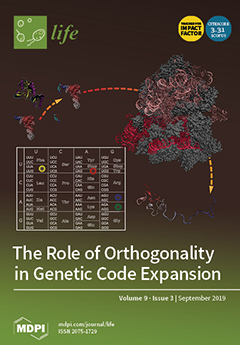Systemic analysis of stress-induced transcription in the cyanobacterium
Synechocystis sp. strain PCC 6803 identifies a number of genes as being induced in response to most abiotic stressors (heat, osmotic, saline, acid stress, strong light, and ultraviolet radiation). Genes for heat-shock proteins (HSPs) are
[...] Read more.
Systemic analysis of stress-induced transcription in the cyanobacterium
Synechocystis sp. strain PCC 6803 identifies a number of genes as being induced in response to most abiotic stressors (heat, osmotic, saline, acid stress, strong light, and ultraviolet radiation). Genes for heat-shock proteins (HSPs) are activated by all these stresses and form a group that universally responds to all environmental changes. The functions of universal triggers of stress responses in cyanobacteria can be performed by reactive oxygen species (ROS), in particular H
2O
2, as well as changes in the redox potential of the components of the photosynthetic electron transport chain. The double mutant of
Synechocystis sp. PCC 6803 (
katG/tpx, or
sll1987/sll0755), which is defective in antioxidant enzymes catalase (KatG) and thioredoxin peroxidase (Tpx), cannot grow in the presence of exogenous hydrogen peroxide (H
2O
2); and it is extremely sensitive to low concentrations of H
2O
2, especially under conditions of cold stress. Experiments on this mutant demonstrate that H
2O
2 is involved in regulation of gene expression that responds to a decrease in ambient temperature, and affects both the perception and the signal transduction of cold stress. In addition, they suggest that formation of ROS largely depends on the physical state of the membranes such as fluidity or viscosity. In cyanobacteria, an increase in membrane turnover leads to a decrease in the formation of ROS and an increase in resistance to cold stress. Therefore: (1) H
2O
2 is the universal trigger of stress responses in cyanobacterial cells; (2) ROS formation (in particular, H
2O
2) depends on the physical properties of both cytoplasmic and thylakoid membranes; (3) The destructive effect of H
2O
2 is reduced by increasing of fluidity of biological membranes.
Full article






